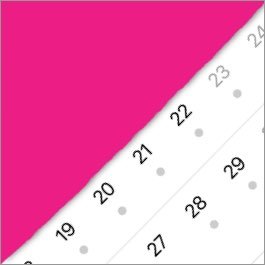IMPROVISING IN A JAZZ STYLE
By JJ Wheeler – musician, teacher and record producer
Developed in the New Orleans melting pot of cultures in the early 1900s, jazz initially began as a mixture of blues, spiritual and Creole music. Often played at social occasions and events such as parties, funerals, and in bars and night clubs around the area, the genre developed a standard repertoire of songs with set forms, over which improvisation and melody would be performed.
Legends such as trumpeter Louis Armstrong grew up immersed in the style, and were instrumental in developing the subsequent paths that jazz took in the 1920s and 30s, from traditional New Orleans styles through Big Band swing and into the early stages of bebop.
Dizzy Gillespie and Charlie Parker then took on the jazz mantle during the late 1930s and 40s, developing bebop in downtown New York along with their peers, at clubs such as Minton’s Playhouse. This was the birthplace of the most typical forms of modern jazz and is often characterised by its elements of swing time (triplet feel), complex harmonic sequences and improvisational structures.
Today, jazz has branched out into dozens of areas, with crossovers and influences from all types of music mixed with jazz sensibilities. The genre is undoubtedly the fastest developing style of the 20th century and continues its expansion worldwide today.
Improvising in a jazz style
Though jazz is a wide-ranging genre, it is useful to think about some of the most historically common elements of the style which we can try to recreate in our improvisations, whether as a lead player or accompanist. One of these elements is the use of swing time – this means feeling the pulse in a 12/8 metre instead of 4/4, which takes us into triplet time. Another way to feel this is to think of a ‘skipping’ motion: take the well-known nursery rhyme ‘Humpty Dumpty’, sing it and you will be creating a triplet feel. This is key to all ‘swung’ types of music.
Another key element to think about is the use of harmonic sequences. Whether playing or singing a lead-line, or performing an accompaniment, it is vitally important to have a grasp of harmonic movement and where you are in the sequence. Accompanying (or ‘comping’) should clearly state this harmonic sequence, to allow soloists to tailor their melodies to the chords. Equally, when playing lead-lines it is important to understand the chord symbols, and which scales to base your melodies from on each of these. For example, a Cm7 chord indicates the use of an E-flat (making the chord ‘minor’) and B-flat due to the ‘7’, which indicates the use of the dominant (flat) 7th note of the chord-scale. Equally Cmaj7 would indicate the use of a B-natural (the ‘major’ 7th of the scale).
Drummers should listen to as much jazz as possible to get a feel for the style. You should notice two important aspects: firstly, the focus of the groove (in both volume and energy) is no longer in the bass drum and snare drum, but usually in the ride cymbal; secondly, the ‘down’-beats (1 and 3) of the bar are no longer the centre of the energy, instead transferred to the 2 and 4 of the bar. Check out the left foot hi-hat which particularly emphasises this by playing the 2 and 4.
Tone plays a big part in jazz styles, no matter which instrument you are playing. While this varies through the different sub-genres of jazz and the fact that different artists have distinctive tones, it is worth checking out some of the sounds adopted by greats, such as Miles Davis during the cool jazz era (the albums Birth of the Cool and Kind of Blue especially), or Ella Fitzgerald’s instantly recognisable vocal tone.
Scat-singing is a common technique employed by jazz singers, in which they improvise melodic lines over the chord changes to form a vocal solo, much like horn players. Scat lines are usually wordless, instead using syllables to create articulation and rhythmic flow. Again, Ella Fitzgerald is a prime example of this technique. Check out her ‘scat’ version of ‘One Note Samba’.
Example improvising videos
Watch videos with session musicians and Rock & Pop examiners JJ Wheeler and Tom Fleming, and session musicians Harry The Piano, Sam Edgington and Brendan Reilly for tips and ideas on how to improvise in a jazz style:
Influential artists
Possibly the most famous jazz artist of all time is Louis Armstrong. His larger-than-life personality translated itself into both his trumpet and vocal performances, with a unique tone and style on both instruments. Born in the early 1900s in New Orleans, Armstrong (or ‘Satchmo’ as he was nicknamed) grew up in relative poverty, turning to music and particularly the cornet to escape the toils of everyday life. He quickly became known for his swinging style and big character, performing in dance bands for social occasions all over the district. After rising through the ranks, he moved to Chicago and later New York, as his fame grew. Over his career he worked with Big Bands and smaller ensembles, most famously alongside singers and instrumentalists such as Ella Fitzgerald, Earl Hines, Bessie Smith and Fats Waller. He recorded hundreds of hits including ‘What a Wonderful World’, ‘St Louis Blues’ and ‘All of Me’. He is also cited as a major inspiration to many huge jazz stars such as Dizzy Gillespie and Miles Davis.
Ella Fitzgerald, known as the ‘First Lady of Song’, was recognised for her pure vocal tone, incredible intonation and clear diction, alongside an ability to scat sing and improvise in the same way as horn players. Born in 1917, her early life was troubled, but she found fame singing on many stages around the Harlem area of New York. Her natural talent was noticed by Decca Records in 1942, which began her professional recording and performing career, eventually lasting around fifty years. She worked with top jazz icons such as Louis Armstrong, Duke Ellington and Quincy Jones, recording hits such as ‘Dream a Little Dream of Me’, ‘Dancing Cheek To Cheek’ and ‘It Don’t Mean a Thing (If It Ain’t Got That Swing)’.
More recently, modern artists such as Michael Bublé have brought jazz to a mainstream audience with hits and covers such as ‘Haven’t Met You Yet’ and ‘Feeling Good‘. Robbie Williams recorded and performed an album of music in the Frank Sinatra vein, entitled ‘Swing When You’re Winning’, in 2001, which included classic swing songs such as ‘Mack the Knife’ and ‘Mr Bojangles’.
Jazz Spotify playlist
We've pulled together a playlist of jazz songs that appear on our Rock & Pop 2018 syllabus as well as other great jazz and jazz inspired songs for further inspiration and ideas. Follow our Spotify profile and playlists to easily find the playlists whenever you want to have a listen.
About JJ Wheeler
JJ Wheeler is a professional touring and session drummer and percussionist, teacher and record label producer. He has worked with artists such as Celine Dion, worked on West End musicals including The Bodyguard and regularly performs in a range of bands across the UK and abroad. JJ runs workshops, clinics and masterclasses all over the world, and is also a Trinity Rock & Pop examiner.







